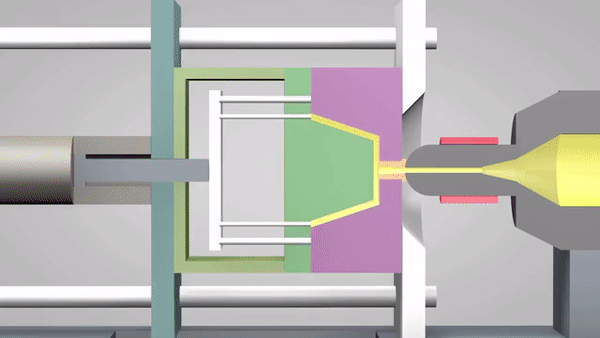The Greatest Guide To Oems
Wiki Article
Plastic Manufacturing Fundamentals Explained
Table of ContentsGetting My Oem To WorkSome Known Factual Statements About Additive Manufacturing What Does Hon Hai Precision Do?Additive Manufacturing Things To Know Before You Get ThisThe 7-Second Trick For Lean ManufacturingAdditive Manufacturing Fundamentals Explained
The text on this page is an example from our full White Paper 'Injection Moulding for Buyers' - * Example message * - for complete overview click the download button over! Introduction This guide is intended for people who are wanting to resource plastic mouldings. It provides a much required insight into all that is involved with producing plastic parts, from the mould device needed to the moulding process itself.If you want to check out even more, the guide covers kinds of mould tools, in addition to unique completing procedures such as colours & plating. Words that are highlighted can be discovered in the glossary in the appendix ... Component I: Moulding: The Basics The Benefits of Injection Moulding Plastic injection moulding is a very precise process that provides a number of advantages over various other plastic processing approaches.
Precision is best for very intricate parts. Contrasted to other methods, moulding permits you to include even more functions at extremely little resistances. Look at the photo to the right. lean production. You can hold this moulding in the palm of your hand as well as it has managers, ribs, metal inserts, side cores and also holes, made with a moving shut off feature in the mould tool.
Additive Manufacturing Things To Know Before You Buy


from material feed Product melting; material injectionProduct shot time cooling down ejection and also the re-closing of the mould tool ready device the next cycleFollowing Draft angles - The wall surfaces of a moulded component must be a little tapered in the instructions in which the component is expelled from the mould tool, to enable the part to be ejected conveniently.
Ejector stroke - The pressing out of ejector pins to eject the moulded part from the mould device. Ejector stroke speed, length as well as timing needs to be carefully regulated to stop damage to the ejectors as well as mould device, yet at the same time make the moulding cycle as short as feasible.

Some Ideas on Hon Hai Precision You Need To Know
Ribs - When a plastic component has slim wall surfaces, ribs are contributed to the design to make the thin wall surfaces more powerful Side cores - Side activity which creates a feature on a moulded component, at an opposing angle to the normal opening instructions of the mould tool. lean manufacturing. The side core requires to be able to pull back as the plastic part can not be expelled otherwise.
Wall surfaces - The sides of a moulded component The text on this page is a sample from our full White Paper 'Shot Moulding for Purchasers'.
Shot moulding is commonly utilized for making a selection of components, from the tiniest components to whole body panels of automobiles. Shot moulding utilizes a special-purpose maker that has 3 parts: the injection unit, the mould as well as the clamp.
8 Simple Techniques For Lean Manufacturing
Refine features [modify] Shot moulding uses a ram or screw-type bettor to force molten plastic or rubber material into a mould dental caries; this strengthens right into a form that has complied with the contour of the mould. It is most frequently made use of to refine both polycarbonate and also thermosetting polymers, with the volume used of the previous being significantly higher.: 13 Thermoplastics prevail as a result of qualities that make them highly appropriate for injection moulding, such as ease of recycling, versatility for a variety of applications,: 89 and capability to soften and also move on home heating.In several cavity moulds, each tooth cavity can be the same and form the exact same components or can be unique and also develop several different geometries during a single cycle.
The screw delivers the raw product onward, blends and homogenises the thermal and also thick circulations of the polymer, as well as reduces the required home heating time by mechanically shearing the material and also including a considerable quantity of frictional home heating to the polymer. The material feeds forward through a check valve and accumulates at the front of the screw right into a volume called a shot. When enough product has actually gathered, the product is required at high stress as well as rate into the part creating dental caries. The specific quantity of contraction is a feature of the material being used, and can be relatively predictable. To avoid spikes in pressure, the procedure typically utilizes a transfer setting representing a 9598% full cavity where the screw changes from a constant velocity to a consistent pressure control.
Plastic Manufacturing - Truths
As soon as the screw reaches the transfer setting the packing stress is used, which finishes mould jit system filling as well as compensates for thermal shrinkage, which is fairly high for thermoplastics about many other materials. useful site The packing pressure is used till the entrance (dental caries entryway) solidifies. Due to its little size, eviction is normally the starting point to solidify via its entire thickness.: 16 Once the entrance strengthens, no more material can get in the cavity; as necessary, the screw reciprocates as well as gets product for the following cycle while the material within the mould cools down to ensure that it can be ejected and also be dimensionally steady.Report this wiki page